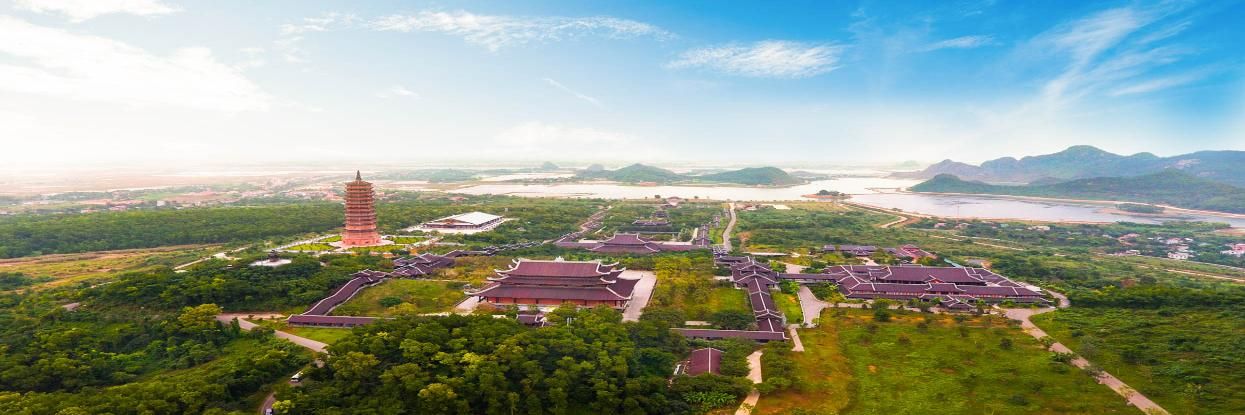Hoa Lu Ancient Capital is not only a valuable relic site but also a remarkable tourist attraction, offering tourists the chance to appreciate both stunning historical scenery and unique architectural values of a bygone era. Read the article for insightful advice and tips on how to explore this breathtaking location in Ninh Binh.
An Overview of Hoa Lu Ancient Capital
The Hoa Lu Ancient Capital belongs to Truong Yen commune, Hoa Lu district, where it is contiguous between Gia Vien and Hoa Lu districts, Ninh Binh province. Hoa Lu is also very close to other attractions such as Trang An, Tuyet Tinh Coc, and the sacred temples.
Formerly, this place was the ancient capital of Hoa Lu under the Dinh, Le, and Ly dynasties. Therefore, Hoa Lu still retains its cultural features as well as historical relics with long-standing values. In particular, this place also has sediments from the early Stone Age more than 30 thousand years ago.
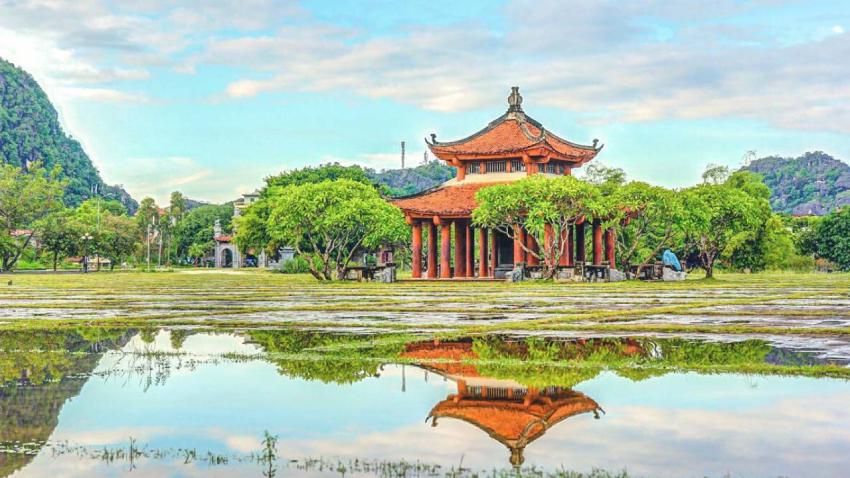
Along with the Trang An Bai Dinh tourist area. Hoa Lu is recognized by UNESCO as a world cultural heritage. Over 1000 years witnessed so many ups and downs and changes in history.
But so far Hoa Lu still retains the beauty from its pristine beauty with solid walls covered with moss. Coming to Hoa Lu Ninh Binh. You can not only explore the culture but also visit the ancient temples too.
The most prominent spots in Hoa Lu Ancient Capital
Temple of King Dinh Tien Hoang
King Dinh Tien Hoang Temple is a unique architecture in Hoa Lu Ancient Capital. Located at the foot of Ma Yen Mountain, King Dinh Temple was a great work of wood and stone carving created by Vietnamese artists in the 17th century. This temple offers an ethereal, timeless beauty that transports us to a millennium-old version of the city.
The complex consists of three shrines: the inner one honors King Dinh Tien Hoang, the middle shrine is called Thien Huong, and the outer shrine is Ngo Mon Gate.
Temple of King Le Dai Hanh
Not far from the Dinh Temple, King Le Dai Hanh Temple was built in the 17th century and included three parts: the front shrine, Thien Huong House, and the Sanctum to worship King Le. In comparison to King Dinh Temple, this temple is smaller and shares the same architectural style.
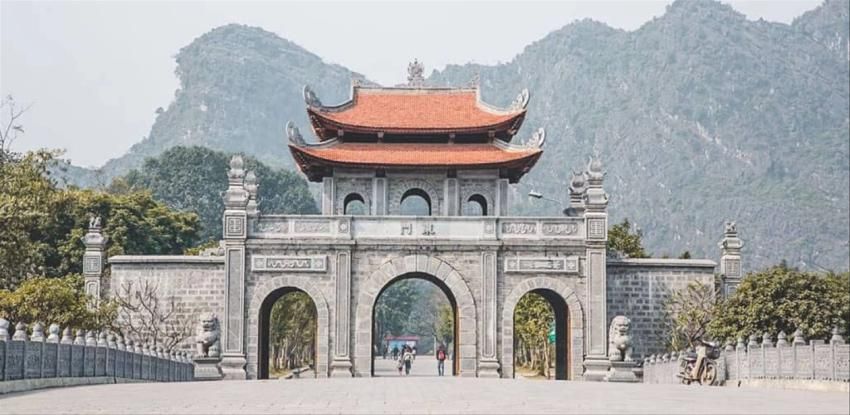
In front of the main temple are the altar and a giant drum. At the back, there are beautiful images of King Le Dai Hanh, his wife, and his unpopular son - King Le Long Dinh.
Nhat Tru Pagoda
Nhat Tru (also known as One Pillar Pagoda) is a place of spiritual activities and an indispensable part of the Hoa Lu Ancient Citadel. Constructed in the 10th century, this pagoda preserves various antiquities attached to the history of the former imperial capital.
Covering an area of over 3,000 square meters, this pillar was erected in the Dinh architectural style with five front halls, three upper halls, and a south-facing tiled roof. The front hall was made of wood and decorated with stylized lotus blossoms and twisted foliage from the Nguyen dynasty. The upper hall adopted the truss structure design with regular pillars and corners carved with dragons and swords in the style of the Le Dynasty.
Hoa Lu Tu Tran (Four sacred temples of Hoa Lu)
Being the capital of the first fundamental dynasty of Vietnam, Hoa Lu Ancient Capital, the cultural center of Ninh Binh, has witnessed many important historical events.
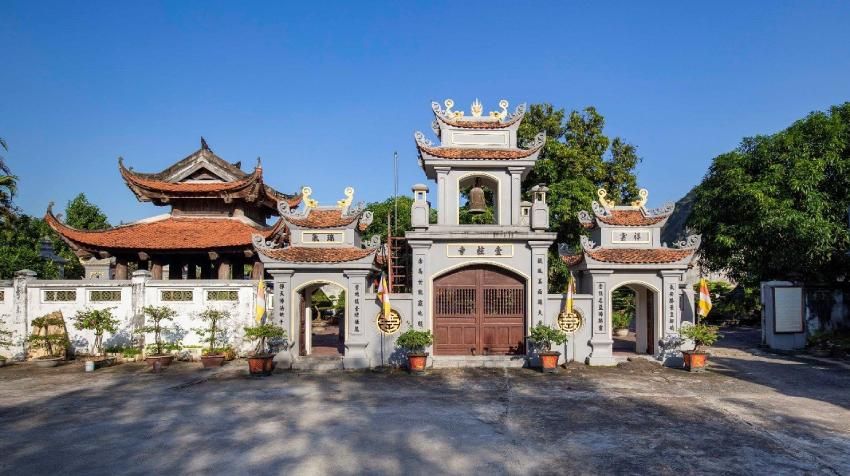
Hoa Lu is famous for its four sacred temples which are built to worship the Gods of the four directions, including Quy Minh Temple in the South, Nguyen Temple in the North, Thien Ton Temple in the East, and Cao Son Temple in the West. It is highly suggested to visit those temples and offer incense to commemorate the merits of the gods as well as experience the spiritual life of the locals.
Am Tien Cave
Am Tien Cave, or Tuyet Tinh Coc in Hoa Lu, is not only an imposing natural landscape but also a cultural site with long-lasting values.
Tuyet Tinh Coc is a great combination of lakes, mountains, and temples. No one can deny its charming appearance. Coming here, you can marvel at the harmonious blend of limestone mountains, a tranquil lake, and a diverse ecosystem. Ao Giai Lake is the highlight of this whole site, thanks to its crystal-clear water reflecting the contemplation of the surrounding mountains. Coming here, you can take in the clean air, enjoy the scent of nature, and hear the sounds of life.
When is the best time to visit Hoa Lu Ancient Capital?
Like other places in Ninh Binh, you can visit this place at any time of the year. However, if you want to visit to enjoy the lively and bustling festive atmosphere, March to May of the lunar calendar is considered an ideal time. Moreover, at this time, the weather is quite comfortable, not yet entering the peak hot season.
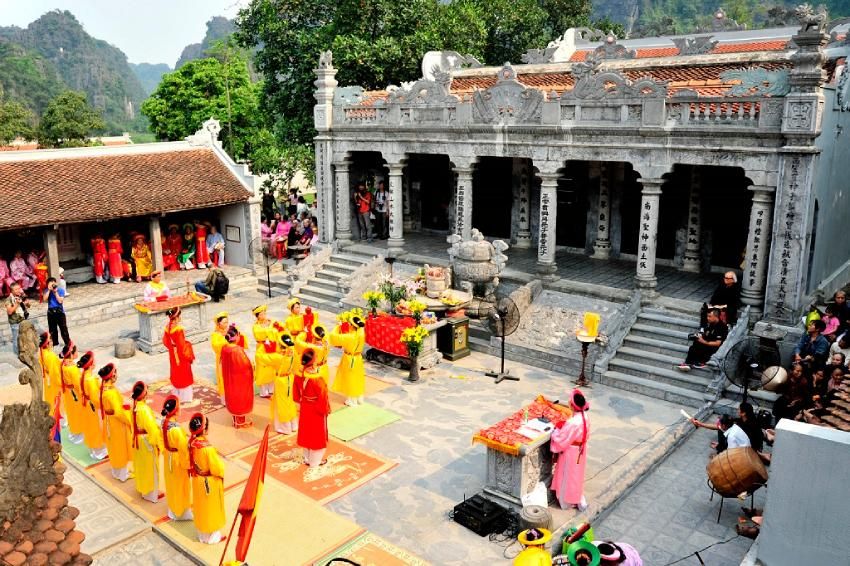
On 8-10 of the 3rd lunar month, every year is the traditional festival of the ancient capital of Hoa Lu. So it often attracts many tourists to go on pilgrimage as well as participate in fun activities. Like folk games…
If you do not want to be crowded, May is also a good suggestion. Because at this time, Ninh Binh’s panoramic view is like wearing a yellow shirt of ripe rice fields. Do not forget to visit Mua Cave & Tam Coc Bich Dong or surrounding places to admire this beautiful scene.
Hoa Lu Ancient Capital stands as a testament to Vietnam’s rich history and cultural heritage, offering visitors a captivating journey through time. Whether marveling at its architectural splendors or delving into its storied past, a visit to Hoa Lu promises an unforgettable experience for travelers worldwide.



